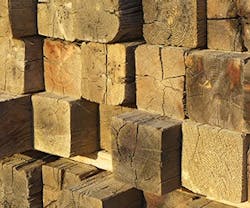New LEED Credit Encourages Responsible Sourcing
The USGBC has released a new Alternate Compliance Path (ACP) for LEED designed to encourage building professionals to use wood materials that are verified to be legal. The ACP is applicable to both the LEED 2009 and LEED v4 programs and will use existing systems and infrastructure to ensure responsible wood sourcing and improve the evaluation process for material specifying.
“Today it is possible to achieve the LEED wood credit and still have illegal wood in a LEED certified project,” says Scot Horst, Chief Product Officer for the USGBC. “This is because LEED projects receive credit for a percentage of the wood on the project rather than all the wood used. LEED is a global standard with a vision of market transformation. Addressing the illegal wood issue in LEED projects, especially in projects outside of the U.S., comes at a critical time both for the global issue of illegal logging and unfair forestry practices and also for LEED and its growing influence.”
The new compliance path will help building professionals make smarter decisions by rewarding facilities that proactively select responsibly sourced wood products. While the ACP initially focuses only on wood, the USGBC plans to use it as a model for other material requirements in future versions of LEED.
